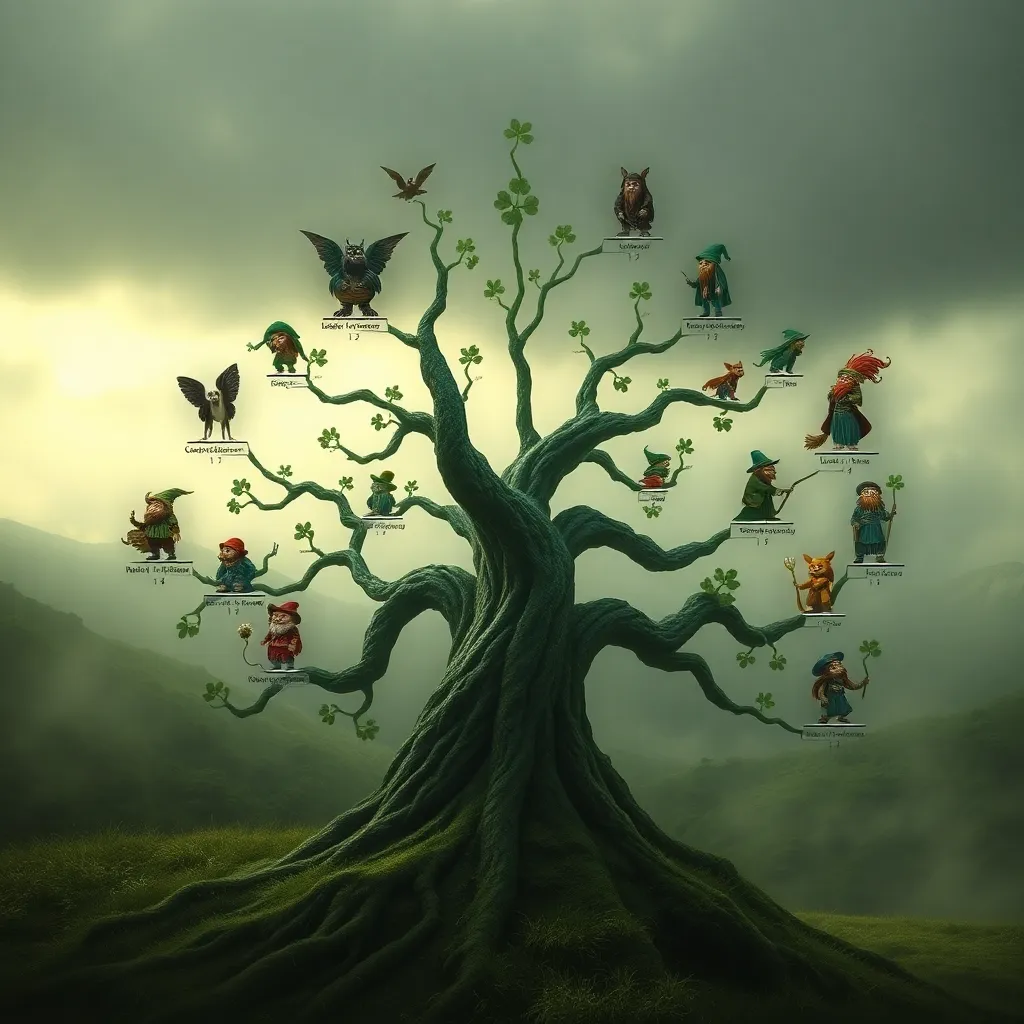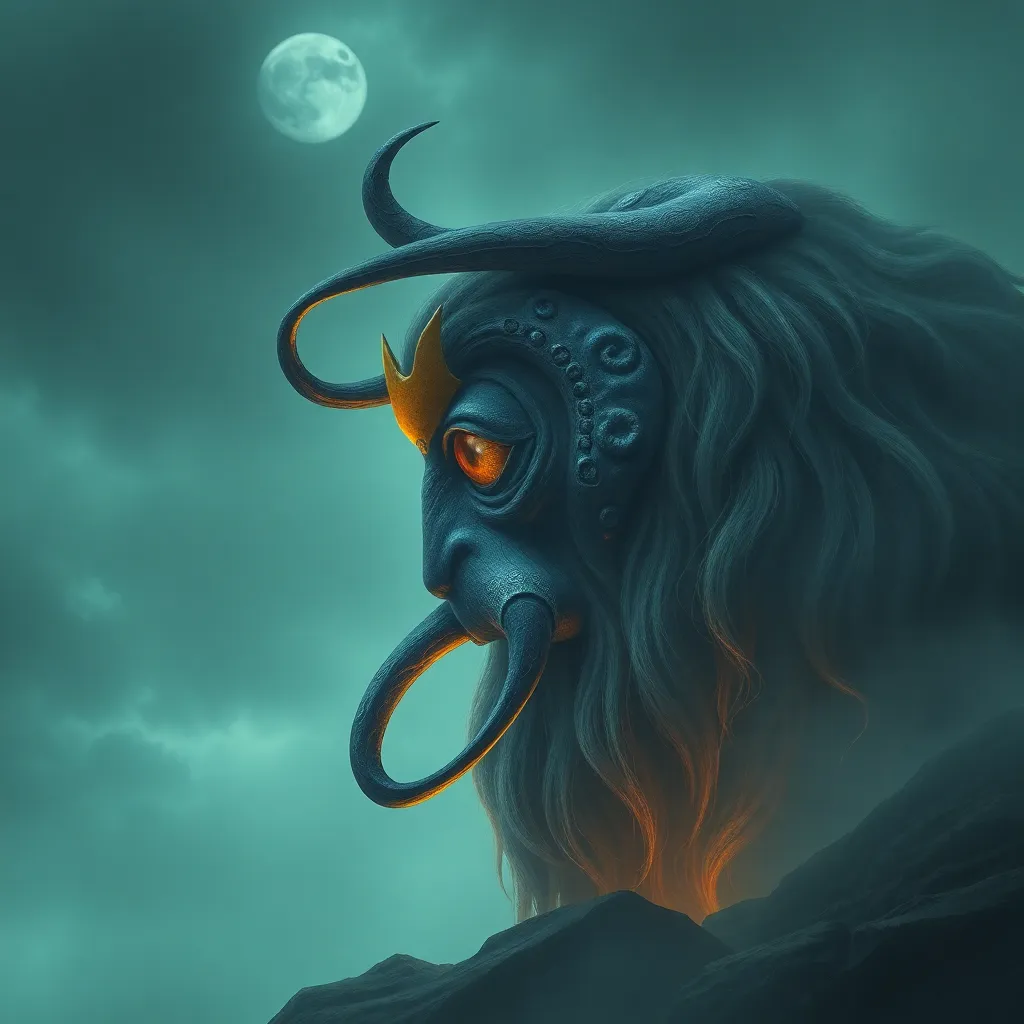The Leprechaun’s Family Tree: Exploring the Relationships Between Different Mythological Beings
I. Introduction
The leprechaun, a small, mischievous figure in Irish folklore, has captivated imaginations for centuries. Often depicted as a bearded man wearing a green coat and hat, leprechauns are famously associated with pots of gold and rainbows. However, the world of leprechauns extends beyond mere trickery and treasure; it is deeply intertwined with a rich tapestry of mythological beings.
This article aims to explore the family tree of leprechauns and their relationships with other mythological beings, shedding light on the connections that define their place in folklore. Understanding these relationships provides insight into the cultural mythology that shapes the identity of Irish folklore and its significance in a broader context.
By delving into these mythological connections, we can appreciate the complexity and depth of cultural narratives that have persisted through generations.
II. The Origins of Leprechauns
The etymology of the term “leprechaun” traces back to the Irish words “leipreachán,” meaning “small body,” and “leipreach,” which can refer to a type of fairy. Historically, leprechauns were not always the benevolent figures they are often depicted as today; they were originally considered solitary fairies who had a role in the fairy world.
Early portrayals of leprechauns in Irish folklore are varied. They were often seen as cobblers, responsible for making shoes for the other fairies, and sometimes even as guardians of hidden treasure. This connection to craftsmanship and wealth laid the groundwork for their modern image.
Leprechauns are closely linked to the Tuatha Dé Danann, a mythical race of god-like beings in Irish mythology. The Tuatha Dé Danann were known for their supernatural powers and cultural significance, marking an important connection between leprechauns and the ancient beings of Ireland.
III. Family Connections: The Leprechaun Lineage
Leprechauns are classified as a type of fairy within the larger classification of fae beings. They share familial ties with various types of fairies, each with distinct characteristics and roles within folklore. For example:
- Seelie and Unseelie Courts: Leprechauns are often associated with the Seelie Court, which embodies benevolence and light, in contrast to the darker Unseelie Court.
- Other Fairies: They share connections with other types of fairies, such as the pixies and the sidhe, all of whom are part of the rich tapestry of Irish mythology.
Notable leprechaun figures, such as the famous “Leprechaun of the Glen,” have their own familial ties, reflecting the interconnected nature of these mythological beings. These stories often highlight the relationships among the fae, showcasing how the actions of one can affect the others.
IV. The Tuatha Dé Danann: A Broader Context
The Tuatha Dé Danann are a significant aspect of Irish mythology, often considered the gods and goddesses of ancient Ireland. Comprised of powerful beings, they are known for their wisdom, artistry, and magical abilities.
Leprechauns fit into the pantheon of the Tuatha as lesser beings with unique roles, often acting as guardians of treasure and knowledge. Their interactions with the other members of the Tuatha are complex, ranging from playful trickery to deeper alliances.
In legends, leprechauns are often portrayed as intermediaries between humans and the Tuatha Dé Danann, providing glimpses into the rich lore of the fae world.
V. The Role of Other Mythological Beings
Beyond their connections with the Tuatha Dé Danann, leprechauns share relationships with other Celtic mythological figures. For instance:
- Banshees: These female spirits are known for their wailing and are often seen as harbingers of death, contrasting sharply with the playful nature of leprechauns.
- Selkies: Seal-like creatures that can transform into humans, selkies represent another aspect of Irish mythology that intersects with the world of leprechauns.
A comparative analysis reveals that leprechauns share traits with similar beings in different cultures, such as goblins in Germanic folklore and gnomes in Scandinavian tales. These relationships highlight the universality of certain mythological themes, such as mischief and guardianship, across cultures.
VI. Symbolism and Themes in Leprechaun Mythology
Leprechaun myths are rich with symbolism and recurring themes that reflect cultural values. Some common themes include:
- Trickery: Leprechauns are often associated with cleverness and deception, embodying the idea that not everything is as it seems.
- Wealth: They are guardians of hidden treasure, symbolizing the pursuit of wealth and the moral lessons associated with greed.
- Guardianship: Leprechauns serve as protectors of their gold, reflecting the value of stewardship and responsibility.
The familial ties among mythological beings also carry symbolic meaning, illustrating the importance of community and relationships in cultural narratives. These themes resonate with values such as loyalty, kinship, and the interconnectedness of all beings.
VII. Modern Interpretations and Adaptations
In contemporary culture, leprechaun stories have evolved, often portrayed in literature, film, and media as whimsical characters. The impact of these adaptations has led to a broadened perception of leprechauns, often overshadowing their rich mythological roots.
Modern interpretations frequently emphasize the comedic and mischievous aspects of leprechauns, resulting in a shift from their ancient roles as complex mythological beings. This evolution reflects societal changes and the ongoing relevance of these connections in storytelling.
Furthermore, the global fascination with leprechauns has led to their incorporation into various cultural festivities, particularly St. Patrick’s Day, reinforcing their status as symbols of Irish heritage.
VIII. Conclusion
In summary, the exploration of the leprechaun’s family tree and relationships with other mythological beings reveals a rich and complex tapestry of cultural narratives. From their origins in ancient folklore to their modern adaptations, leprechauns serve as a fascinating lens through which we can understand the broader context of Irish mythology.
The importance of studying these mythological connections lies in their ability to illuminate cultural heritage and the values embedded within. As we continue to explore the world of myth, we uncover the threads that bind us to our past and foster a deeper appreciation for the stories that shape our identities.
We invite readers to further explore these mythological connections in global folklore, as they offer invaluable insights into the shared human experience and the enduring power of storytelling.



